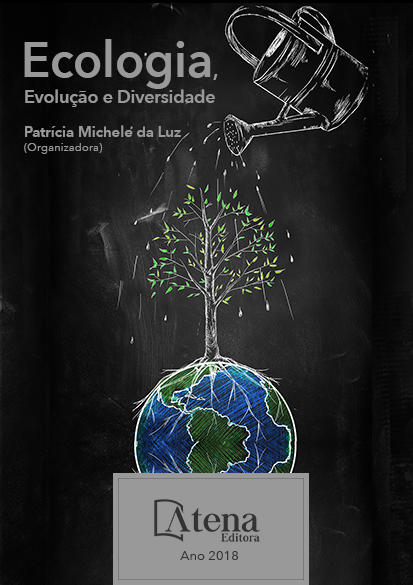
ESTUDO DAS ASSEMBLEIAS DE OLIGOQUETAS EM NASCENTES DE MINAS GERAIS
Nascentes são ecossistemas aquáticos, protegidas por lei, que vem sofrendo com o impacto antrópico. Dentre os invertebrados que vivem em nascentes, oligoquetas são abundantes, porém no Brasil não há estudos sobre esses vermes nesse ambiente. Nosso objetivo é conhecer a oligofauna de nascentes e suas relações com as variáveis ambientais. Coletas foram realizadas em nove nascentes no município de Juiz de Fora, MG, (classificadas em duas tipologias: helocreno e limnocreno), avaliadas pelo protocolo de avaliação de impacto ambiental e por variáveis abióticas. Foram coletados 288 espécimes pertencentes às famílias Naididae, Enchytraeidae e Aelosomatidae. Oligoquetas de nascentes helocreno (Poço D’Anta e Jardim Botânico) foram mais abundantes devido à maior heterogeneidade dos substratos e acúmulo de detritos em relação às do tipo limnocreno (Parque da Lajinha). As variáveis abióticas foram diferentes em relação à tipologia das nascentes: temperatura e condutividade foram maiores em nascentes limnocreno, assim como menores valores de oxigênio dissolvido, o que contribuiu para menor abundancia e riqueza de oligoquetas nesse tipo de nascente. Nascentes do Parque da Lajinha tiverem pior classificação no protocolo de avaliação de impacto ambiental devido à localização próxima à intensa movimentação de veículos e por ser de fácil acesso à população. Este trabalho relata o primeiro registro de oligoquetas em nascentes de Minas Gerais, contribuindo para o conhecimento sobre esses organismos e os habitats que podem ser ocupados por eles. Também mostra a importância da heterogeneidade física e da conservação das condições naturais das nascentes como essenciais para a manutenção do equilíbrio ecológico destes habitats.
ESTUDO DAS ASSEMBLEIAS DE OLIGOQUETAS EM NASCENTES DE MINAS GERAIS
-
DOI: Atena
-
Palavras-chave: biodiversidade, crenal, ecologia, ecossistemas aquáticos, conservação
-
Keywords: biodiversity, crenal, ecology, aquatic ecosystems, conservation
-
Abstract:
Springs are aquatic ecosystems that are usually protected by law, but they still suffer from anthropic impacts. Among the invertebrates that live in spring waters, the oligochaetes are particularly abundant. However, in Brazil no studies have been published about these worms in this habitat. We analyzed the oligofauna of springs and the relations with environmental variables. Samples were collected in nine springs in the municipality of Juiz de Fora, Minas Gerais (classified in two typologies: helocrene and limnocrene). The specimens (n=288, belonging to the families Naididae, Enchytraeidae and Aelosomatidae) were evaluated by an environmental impact assessment protocol and by abiotic variables. The oligochaetes from helocrene springs (Poço D’Anta and Jardim Botânico) were more abundant, due to the greater heterogeneity of the substrates and accumulation of litter, in relation to those from the limnocrene springs (Parque da Lajinha). The abiotic variables differed according to spring type: temperature and conductivity were higher in the limnocrene springs, while the dissolved oxygens values were lower, contributing to the lesser abundance and richness of oligochaetes in this spring type. Springs in Parque da Lajinha had worse classification in the protocol used due to the location near intense vehicle traffic and easy access of people. This study provides the first report of oligochaetes in springs in the state of Minas Gerais, thus shedding light on these organisms and the habitats they occupy. It also shows the importance of physical heterogeneity and of preservation of natural conditions of springs as essential elements to maintain the ecological biodiversity of these habitats.
-
Número de páginas: 15
- Luiza Pedrosa Guimaraes


